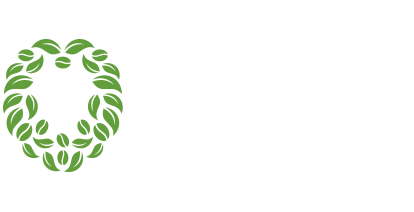Coffee is more than just a cash-crop to us Ethiopians; it is part of our culture..our identity.
Traceable and Certified
Through our relationships in Ethiopia, we are able to provide unparalleled access to exclusive specialty coffees directly from origin. As the Ethiopian coffee industry has begun to ease exporting restrictions (2018), we have made it our mission to provide transparency into each of our partners and their operations. Our traceable coffees come from three predominant sources:
01 Smallholder farmers who sell cherries to our washing station;
02 Cooperatives who sell us green to export/import;
03 Private Farms & 3rd party washing stations who sell us green to export/import.
Single Estates and Traceable Lots
Regional Coffee Types
Kochere
NEW ARRIVAL
You may have heard of a Kochere bean being referred to as a Yirgacheffe, that’s because both are Woredas located within the Gedeo Zone found in South Eastern part of Ethiopia. Kochere is southwest of Yirgacheffe and near a kebele named “Ch’elelek’tu”. The soils in this region are red-brown clay soil, and reportedly 1.5 meters deep.
Flavour Profile: light bouquet of lavender and bergamot facilitate a tea-like experience with typical bold citrus that we’re familiar with from this region.
The coffee is produced by around 650 smallholder farmers at an altitude of 1800-2000 meters above sea level. The farmers bring their ripe cherries to the mill where they are graded, sorted, de-pulped and fermented under water for around 36 – 48 hours. The parchment is then sorted in washing channels and laid out across raised African drying tables for about 2 weeks until moisture levels reach 12% or lower.
Guji
NEW ARRIVAL
Once a part of the Borena Zone, known traditionally for cattle reering, Guji was ravished by bush fires over a two year period (1997 to 1999). Shortly after locals returned to the lands to cultivate once again. became it’s own zone after Borena split apart in 2002. Popular woredas within Guji are Hambela and Odo Shakiso. Based on a 2007 census, the Oromo people made up 78.5% of the population. They regard their region as the nerve center of Oromo culture. The ceremonies, customs and wisdom that come with the Gada (a system of generation segments or classes that succeeded each other every eight years in assuming political, military, judicial, legislative and ritual responsibilities.) system are still widely followed among the people. Besides this, coffee farming is ingrained in the Guji culture- the two are inseparable.
In terms of topography, culture, and flavours, coffee from Guji has a distinct terroir while sustaining the classic characteristics like the Aromas of sweet peach, maple candy and cacao nibs. A very big, bold character with a smooth, chocolate mouthfeel. Spicy, exotic, and clean. Guji coffees offer a composite, yet balanced cup profile that blends with both filter and espresso. Previously, Guji produced both washed and naturals exclusively, but of late producers have started to offer honeys as well.
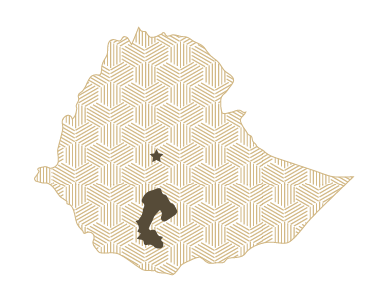
| Growing Altitude | 1,800 – 2,100 meters above sea level |
| Arabica Variety: | Ethiopian Heirloom |
| Harvest Period: | October – December |
| Milling Process: | Washed or Sundried |
| Aroma: | Floral, Sweet |
| Flavor: | Complex, Fruity, Floral, Lemon |
| Body: | Medium to Light |
| Acidity: | Sweet, Citric, Soft |
| Grades Available: | 1, 2 |
Yirgacheffe ይርጋጨፌ
Yirgacheffe is a micro district (or “woreda” which is an “administrative division of Ethiopia”) found in southern Ethiopia as part of the Gedeo Zone. The Gedeo zone is located in the Southern Nations, Nationalities, and Peoples’ Region (SNNPR) of Ethiopia and is known to produce some of the most well-balanced cups, with complexity in its flavors & acidity.
Yirgacheffe is found right in the middle of the Gedeo Zone, with an altitude between 1,800 – 2,100 meters above sea level. This woreda boasts an abundance of lush-green vegetation, providing ideal growing conditions for coffee plantations, as coffee is grown in high-altitudes and in some methods, under the forest canopy. The Yirgacheffe region produces Ethiopia’s best & most complex profiles, with the majority of Yirgacheffe coffee being wet-processed. Although the naturally dried beans from this zone have been gaining some traction.
Some of the top grade Yirgacheffe coffees share the same characteristics with the best Sidamo coffees. These characteristics are fruit flavours, bright acidity and a silky, clean mouth feel. The acidity is bright and often accompanied with a lemony character, and phenomenal sweetness. Another hallmark characteristic of this type of coffee is it’s light body and herbaceous quality.
Limu ሊሙ
This coffee is found in two adjacent zones called the Illubabor zone and the Jimma Zone, with Limu being the name to define this certain flavor of coffee. The Jimma zone is found in the Ethiopian Region of Oromia and is named after the former Kingdom of Jimma. The Illubabor zone is also found in the Ethiopian Region of Oromia, west of Jimma, along the border with Sudan. Most of Ethiopia’s coffee is grown in Oromia, the largest of the country’s 9 regional states. It is also widely believed that coffee was first discovered over 1000 years ago in western Oromia, and more specifically, in the old Kingdom of Kaffa.
Oromia’s growing areas boast the most ideal conditions for arabica, characterized by high altitude; rich, well-drained (and mainly volcanic) soils; a tropical climate with a nine-month rainfall period and moderate year-round temperatures between 15 – 24 degrees Celsius.
The Ethiopian Commodity Exchange (ECX) categorizes Limu coffee into two categories, based on the zone it is grown in. Category A represents coffee from Jimma which can be found in woredas such as Goma, Limu Kossa, Limu Seka, and more. Category B represents coffee from Illubabor which can be found in woredas such as Gore, Yayu, Metu, etc.
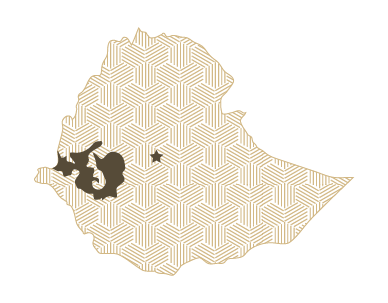
| Growing Altitude | 1,750 – 2,550 meters above sea level |
| Arabica Variety: | Ethiopian Heirloom |
| Harvest Period: | August – December |
| Milling Process: | Washed |
| Aroma: | Melon and Soft florals |
| Flavor: | Wine and Spicy, Fruit-tones |
| Body: | Well-balanced body |
| Acidity: | Mild, Citric acidity |
| Grades Available: | 2 |

| Growing Altitude | 1,550 – 2,500 meters above sea level |
| Arabica Variety: | Ethiopian Heirloom |
| Harvest Period: | October – December |
| Milling Process: | Full Washed |
| Aroma: | Floral, Citrus, Cocoa |
| Flavor: | Herbal, Lemony |
| Body: | Soft yet smooth body |
| Acidity: | Citrusy and Bright |
| Grades Available: | 2 |
Sidamo ሲዳሞ
The Sidamo Zone, named after the Sidama people, is located in the Southern Nations, Nationalities and Peoples Region (SNNPR) of Ethiopia. With a population of approximately 3.2 million people, the Sidamo zone is the country’s leading producer of green coffee beans. The coffee growing regions of Sidamo lie in the famous Great Rift Valley, which runs through Ethiopia and Kenya. Many of the farmers in Sidamo grow their own unique varietals on excess land found around their residences. They will harvest the coffee cherries and deliver them to processing sites, which will result in a blend of mixed heirlooms – this is what gives Sidamo coffee its exquisite complexity.
The Sidamo zone is northeast of Lake Abaya and southeast of Lake Awasa. The climate conditions vary across the zone based on the altitude above sea level, with the majority of the area being fertile. Warm conditions cover over 50% of the area, with an elevation of 1,500 – 2,500 meters above sea level. Kolla, the hot climate zone, covers 30% of the total area, with the mountainous highlands covering the remaining portion of the Sidamo Zone.
Sidamo features a wide variety of coffee flavours, with many different grades of both washed & unwashed produced. The varying soil types, micro climates and coffee tree varietals contribute to a mixing pot of different flavours. This is also what makes it difficult to assign cupping notes to Sidamo coffee.
Harrar ሐረር
Harrar is a walled city in eastern Ethiopia and is the capital of the Harrar Region. The interior of Harar’s old city is distinguishable for its labyrinth of colorful walls and its mix of both traditional Harari houses and modern abodes with wooden verandas. The Harrar region is subdivided into four smaller regions: East Harrar, West Harrar, Bale and Arsi. The city is located in the Ethiopian highlands at an elevation of 1885 meters above sea level. One of the holiest cities in Islam, it is uniquely surrounded by a stone wall and is also designated as a UNESCO World Heritage Site. It is widely believed that coffee first cultivated in Yemen was brought across the red sea from the Harrar Region. Harrar became famous for its coffee as early as the 16th century and is still recognized today.
Harrar coffee comes typically comes dry processed, which means that once the beans are harvested, they are dried in layers on stone patios or tables. Quality Harrar coffees have notable fruity characteristics, and a creamy body. The best Harrar coffees have a distinct note of blueberry, though many other fruity aromatic flavours can occur.
By law, all Harrar coffee that is exported from the country, must be done from the city of Dire Dawa (Dee-ree Dow-Ah). The city of Dire Dawa is the central trade and transportation node for all of eastern Ethiopia and is the second largest city in the country. Given that Ethiopia is landlocked, the train route that is used to access the port of Djibouti runs through Dire Dawa, which is why the city is a lifeline for the economic livelihood of the region and the country.
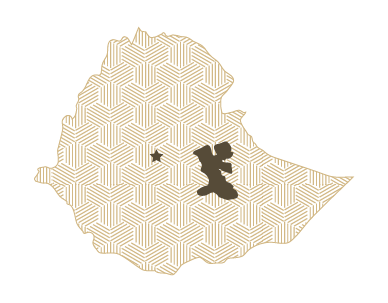
| Growing Altitude: | 1,150 – 2,120 meters above sea level |
| Arabica Variety: | Ethiopian Heirloom |
| Harvest Period: | October – December |
| Milling Process: | Natural, Sundried |
| Aroma: | Earthy, Chocolate, Berry |
| Flavor: | Mocha flavor, Blueberry & Blackberry |
| Body: | Creamy body |
| Acidity: | Brilliant floral acidity |
| Grades Available: | 4 |

| Growing Altitude: | 1,500 – 2,000 meters above sea level |
| Arabica Variety: | Ethiopian Heirloom |
| Harvest Period: | February – April |
| Process: | Natural |
| Aroma: | Blossom |
| Flavor: | Mocha flavor, Blueberry & Blackberry |
| Body: | Delicate |
| Acidity: | Medium to pointed |
| Grades Available: | 4 |
Lekempti ለቀምቴ
Lekempti is a name assigned to all coffees traded through the market town of Nekemte, found in western Ethiopia. It is located in the East Welega Zone of the Oromia Region. The name Lekempti is often used interchangeably with “Gimbi”, named after a small woreda just west of Lekempti, located in the West Welega Zone. Lekempti/Ghimbi is renowned for its exotic palate which distances itself from the usually cherry tones of Ethiopian.
Djimmah ጅማ
The Djimmah zone, named after the former Kingdom of Djimmah, is found in the region of Oromia. Djimmah is also the name of the main city here, and is the largest city in south-western Ethiopia. The majority of coffee from this zone is naturally processed – that is, laid out on raised beds above the ground and left to dry in the sun (i.e. sun dried). Djimmah coffee sold from the ECX is commercial grade and is used frequently in Arabica blends.
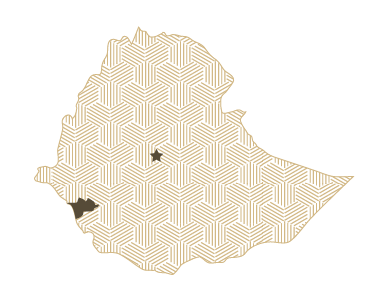
| Growing Altitude | 1300 – 1800 meters above sea level meters |
| Arabica Variety: | Ethiopian Heirloom |
| Harvest Period: | November – March |
| Milling Process: | Natural – Sun Dried |
| Aroma: | Woody |
| Flavor: | Earthy, fruity and winey notes |
| Body: | Strong |
| Acidity: | Medium to light |
| Grades Available: | 4,5 |
Coffee is more than just a cash-crop to us Ethiopians; it is part of our culture..our identity.
Export Manager

